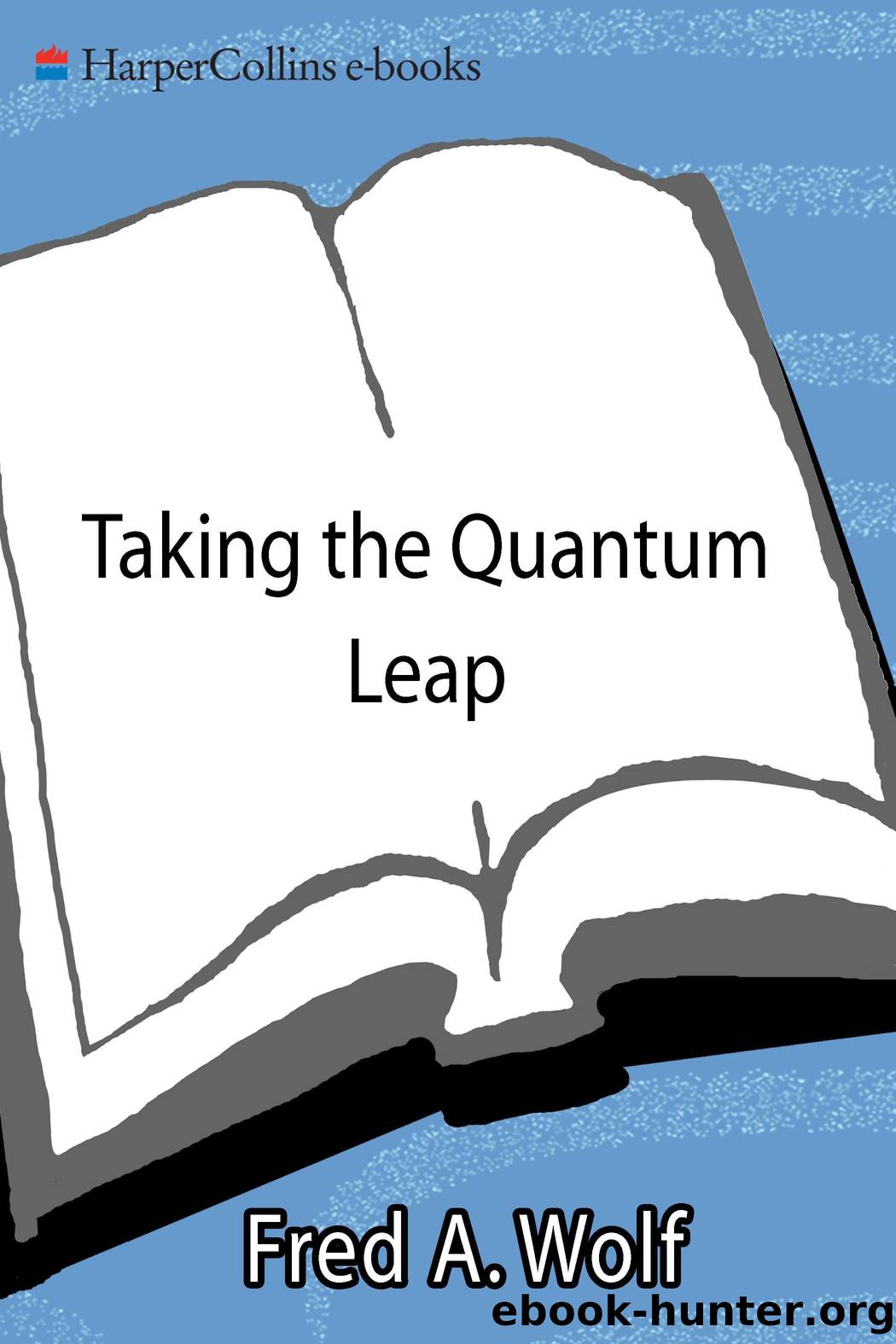Taking the Quantum Leap by Fred A. Wolf

Author:Fred A. Wolf [Wolf, Fred Alan]
Language: eng
Format: epub
ISBN: 978-0-06-203639-1
Publisher: HarperCollins
Published: 1981-01-15T00:00:00+00:00
The position and the momentum of any object appear to be real quantities. Both can be predicted with practical certainty for any classical-sized, macroscopic object. But in the case of atoms and electrons, the uncertainty principle denies reality to both of these quantities. It is impossible to determine the momentum of an object with absolute certainty if the position of that object is determined with absolute certainty. Thus we can conclude, from the EPR condition of sufficiency, that one of these two quantities must not be physically real. Which one is to be denied reality depends on our choice. When we measure one of the two quantities, the other is denied existence.
Even Bohr would agree with this. But Einstein was working toward a clever conclusion, one that would show that quantum mechanics, if accepted as the last word on reality, leads to a contradiction. Einstein and his friends would use quantum mechanics to prove that it is possible to predict either the position or the momentum of an object without disturbing the object. In other words, after the object leaves all physical influence that the observer is capable of exerting on that object, either of its two physical attributes can be predicted with certainty. But the choice depends on the observer, not the object. According to EPR, the object must have had both quantities before the prediction is made. All the observer does is choose which quantity to predict.
Yet EPR would agree that it is not possible to predict both position and momentum at the same time. To do so would violate the uncertainty principle. The EPR argument did not attempt to go that far.
The reason for this rather paradoxical situation has to do with the way in which the observer makes his prediction: he makes his prediction not by disturbing the object itself, but by disturbing another object that had a previous encounter with the first object. The observer learns about the first object by observing the second object because of something physicists call a correlation between the two objects that have interacted.
For example, take the game of billiards or pocket pool. When shooting one ball at another, it is possible to predict the behavior of the second ball by observing the first one only. Since these objects are large or âclassicalâ size, it is possible to measure the position and momentum of a ball simultaneously with very good accuracy. By carefully measuring the position and the momentum of the first ball, both before and after its collision with the second ball, both the position and the momentum of the second ball can be determined. Once the two balls have collided, they are correlated. In other words, what happens to each of the balls depends on what happened in their past interaction. So if we observe one of the balls, we will find we can predict what we will observe for the other ball.
After the balls have clearly separated from each other, nothing we might care to do to one of them will affect or change the other.
Download
This site does not store any files on its server. We only index and link to content provided by other sites. Please contact the content providers to delete copyright contents if any and email us, we'll remove relevant links or contents immediately.
The Complete Stick Figure Physics Tutorials by Allen Sarah(7307)
Secrets of Antigravity Propulsion: Tesla, UFOs, and Classified Aerospace Technology by Ph.D. Paul A. Laviolette(5309)
Thing Explainer by Randall Munroe(3877)
The River of Consciousness by Oliver Sacks(3540)
The Order of Time by Carlo Rovelli(3145)
How To by Randall Munroe(3035)
A Brief History of Time by Stephen Hawking(2961)
I Live in the Future & Here's How It Works by Nick Bilton(2935)
The Great Unknown by Marcus du Sautoy(2648)
What If?: Serious Scientific Answers to Absurd Hypothetical Questions by Randall Munroe(2637)
Midnight in Chernobyl by Adam Higginbotham(2483)
Blockchain: Ultimate Step By Step Guide To Understanding Blockchain Technology, Bitcoin Creation, and the future of Money (Novice to Expert) by Keizer Söze(2449)
Networks: An Introduction by Newman Mark(2360)
The Meaning of it All by Richard Feynman(2300)
Easy Electronics by Charles Platt(2282)
The Tao of Physics by Fritjof Capra(2231)
Midnight in Chernobyl: The Untold Story of the World's Greatest Nuclear Disaster by Adam Higginbotham(2177)
When by Daniel H Pink(2083)
Introducing Relativity by Bruce Bassett(2080)
